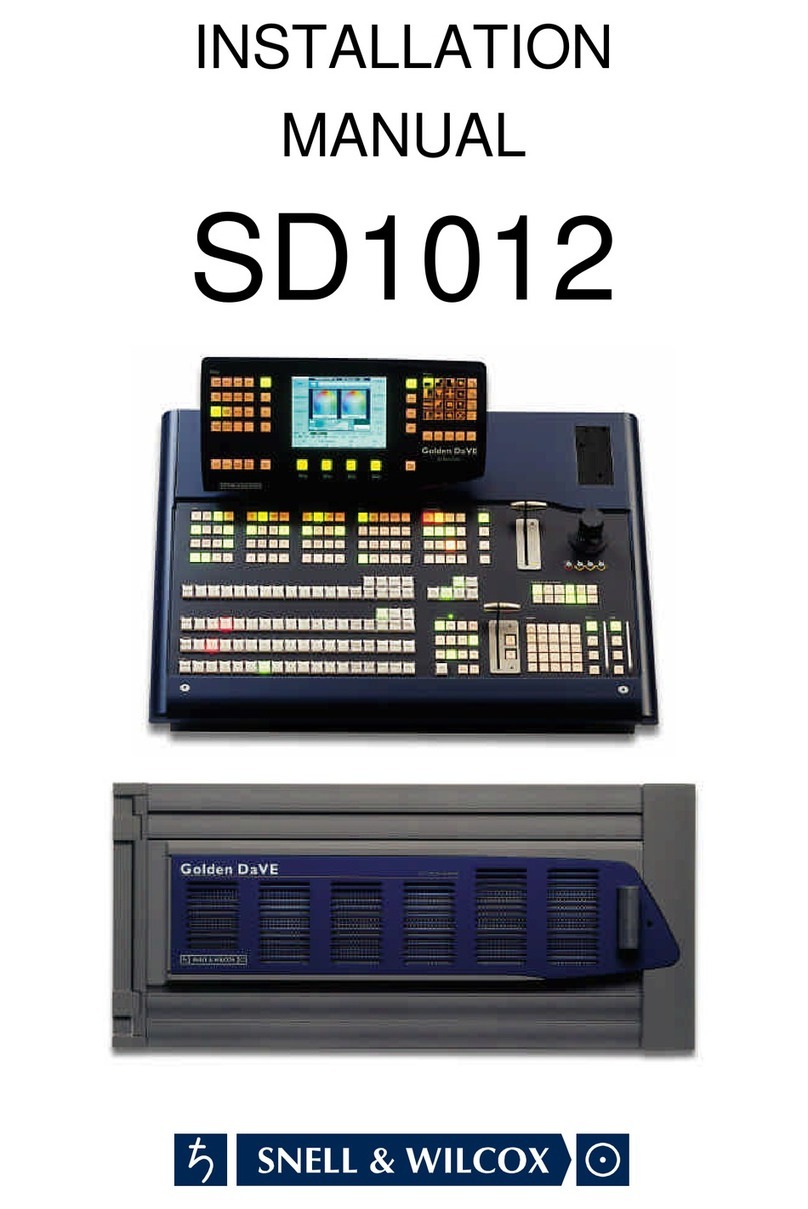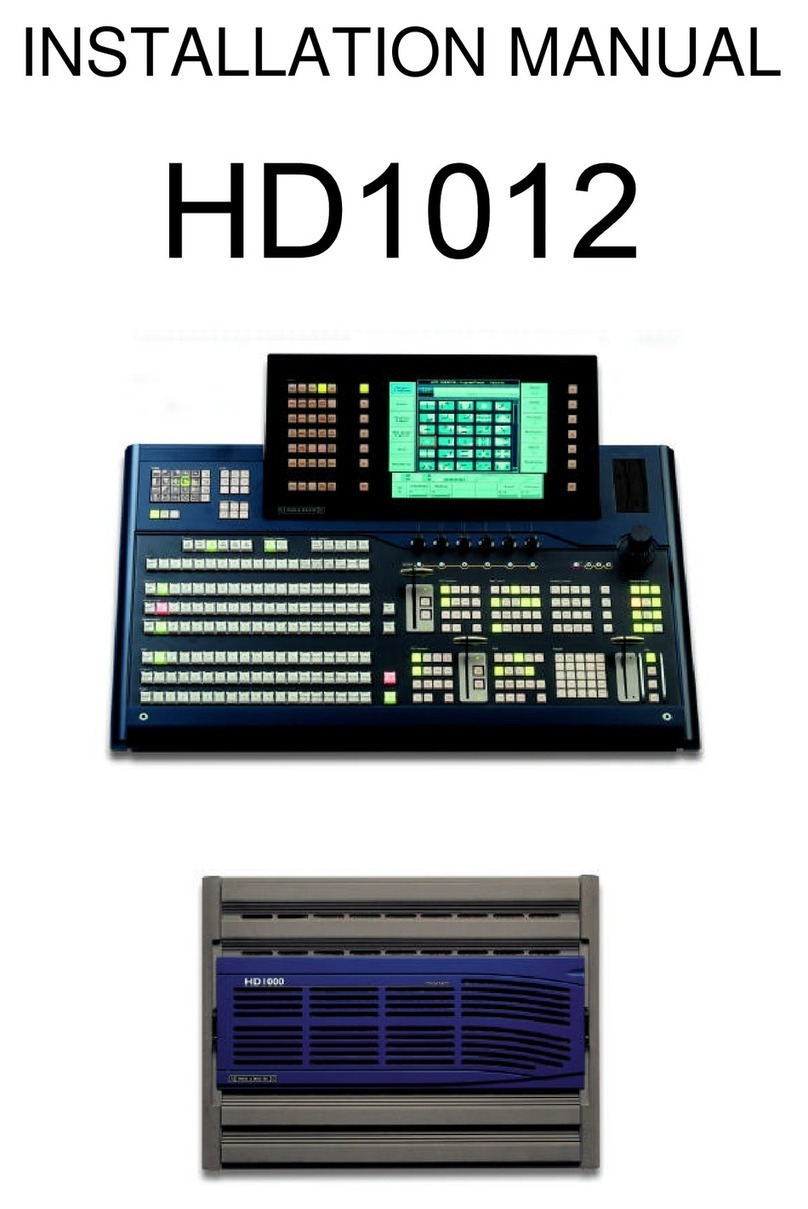
IQBRT8 SECTION 41b
IQBRT8OPS 020403 Version 1 Issue 7 41b.5
TECHNICAL PROFILE
Features
Signal Inputs
Digital Audio Input (Balanced –D versions)
8 Channel Pairs AES/EBU
via 25 way D Connector
Digital Audio Input (Unbalanced –B versions)
8/6 Channel Pairs AES/EBU
via BNC Connectors
AES Reference Input (Balanced –D versions)
Sample Frequency 48 kHz via 9
way D Connector or via BNC
connector
Reference Input (Balanced –D versions)
525/625 line Black Burst via BNC
connector
Reference Input (Unbalanced –B versions)
525/625 line Black Burst, or
unbalanced AES/EBU sample
frequency 48 kHz via BNC
connector
Signal Outputs
Digital Audio (Balanced –D versions)
8 channel pairs AES/EBU
via 25 way D Connector
Digital Audio (Unbalanced –B versions)
8/4 channel pairs AES/EBU
via BNC Connectors
Digital Audio Monitor (Balanced –D versions)
1 channel pair AES/EBU
via 9 way D Connector
Digital Audio Monitor (Unbalanced –B versions)
1 channel pair AES/EBU
via BNC Connector
Card Edge Controls (also available via RollCall)
Router Mode only, Configure output channels
Independently configure the 8
outputs to any of the 8 inputs
Take Button ....................... Initiates routing
Indicators
AES Input error .................. Illuminates when there is an error
on the AES inputs
Sync Loss .......................... Illuminates when locking source is
lost
Take LED........................... Flashes when routing assignment
has changed and requires initiating
via take button
Power OK .......................... +5 V, -5 V
Functions Available via RollCall™ Only
Input Sample rate detection Automatic 32, 44.1, 48 kHz
detection
Input programme level adjust
Adjusts input programme level for
each input channel from
+ 6 dB to -18 dB in 0.1 dB steps
Test tone insertion ............. Insert test tone or silence into any
output sub-frame
Test tone frequency ........... Select test tone frequency from
250 Hz to 16 kHz in 250 Hz steps
Lock select......................... Selects synchronizing source, from
either:- Video, AES Reference,
Input 1 or freerun
AES Input status monitor ... Displays AES format and status
Channel Status Monitor...... Displays input or output channel
status for any subframe
Channel Status Editor ........ Enables user to edit Channel
status information
Peak Programme Meter for any input
Scale of 0 - 7, 4 dB steps,
adjustable 0 dBu reference (‘4’) –
10 dBFS to
-24 dBFS
Phase reversal ................... Independent phase reversal for any
input subframe
Eight memory stores .......... Storage and recall of selected
parameters





























